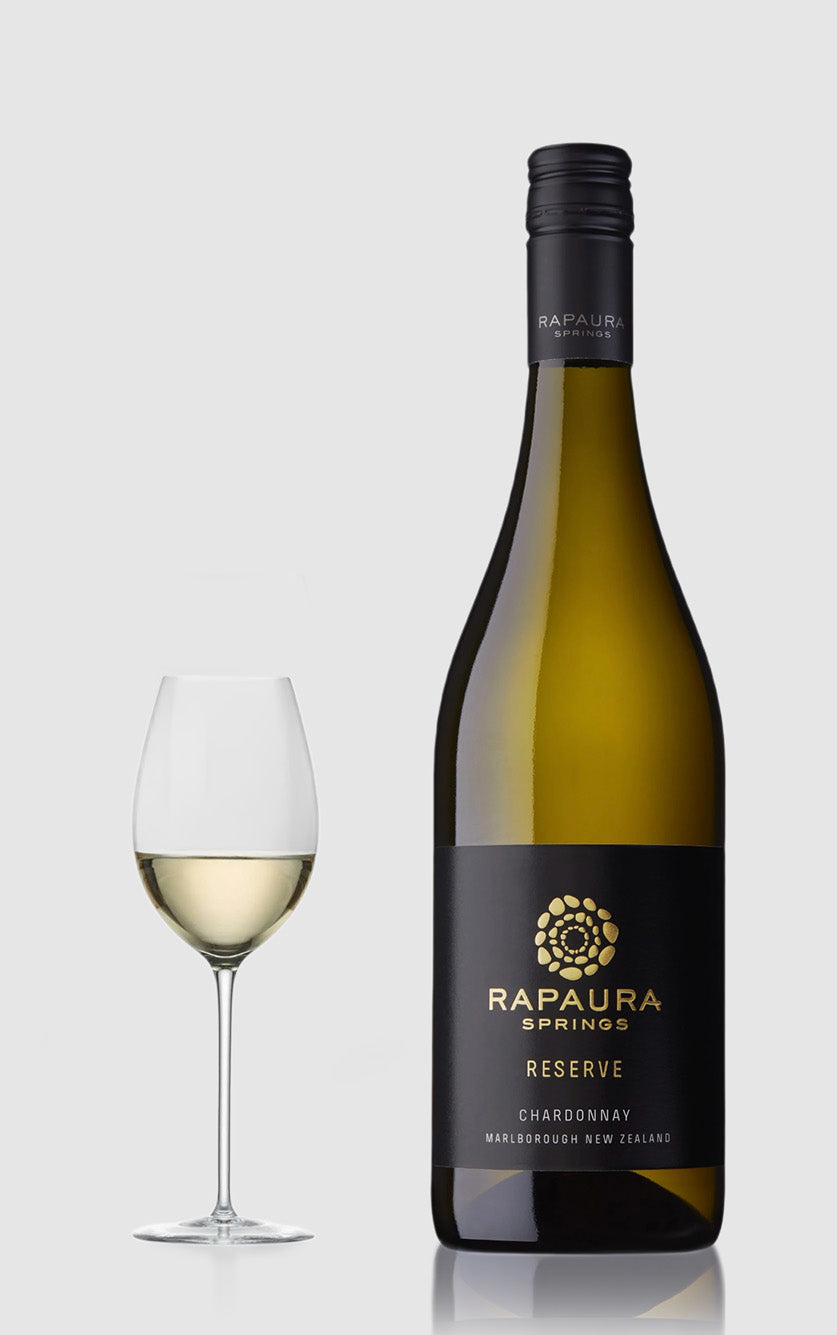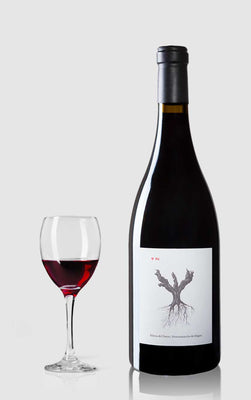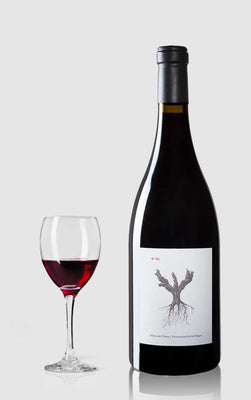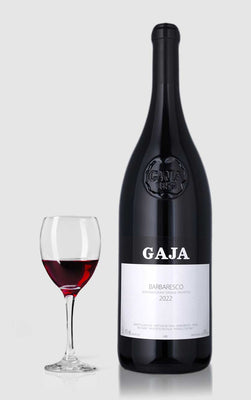Andre kategorier du måske vil kunne lide
Spanish Red Wine
-
 ★ 93 – DH Wines
★ 93 – DH WinesAalto Ribera del Duero 2022
Vendor:AaltoRegular price 399,00 DKKRegular priceUnit price / per0,00 DKKSale price 399,00 DKK -
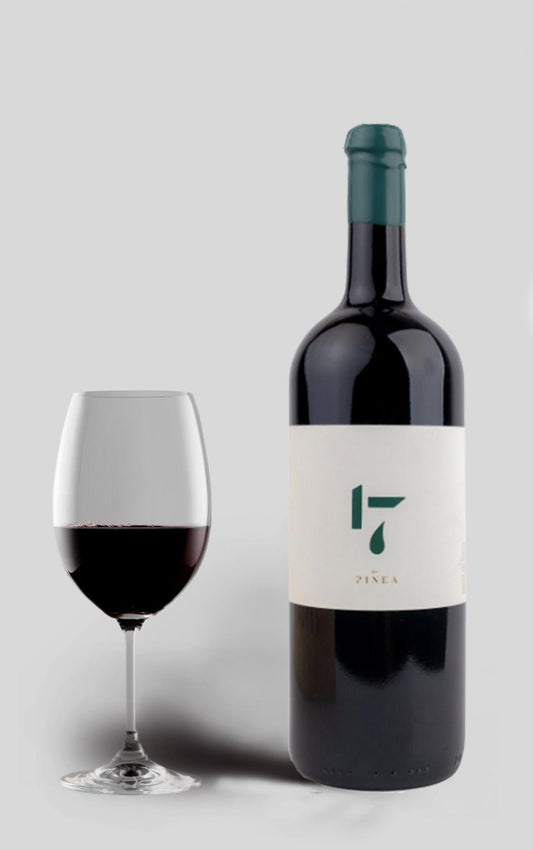 ★ 96 – Robert Parker★ 95 – James Suckling★ 95 – Decanter★ 95 – DH Wines★ 93 – Wine Enthusiast★ 4.5 – Vivino
★ 96 – Robert Parker★ 95 – James Suckling★ 95 – Decanter★ 95 – DH Wines★ 93 – Wine Enthusiast★ 4.5 – VivinoBodegas Pinea 17 - 2021 Ribera Del Duero
Vendor:Bodegas PineaRegular price 499,00 DKKRegular priceUnit price / per0,00 DKKSale price 499,00 DKKSold out -
 ★ 93 – DH Wines
★ 93 – DH WinesEl Abuelo Reserva 2020
Vendor:Bodegas PiquerasRegular price 149,00 DKKRegular priceUnit price / per -
 ★ 91 – DH Wines★ 4.0 – VivinoSold out
★ 91 – DH Wines★ 4.0 – VivinoSold outJuan Gil Silver Label 2019
Vendor:Bodegas Juan GilRegular price 99,00 DKKRegular priceUnit price / per149,00 DKKSale price 99,00 DKKSold out -
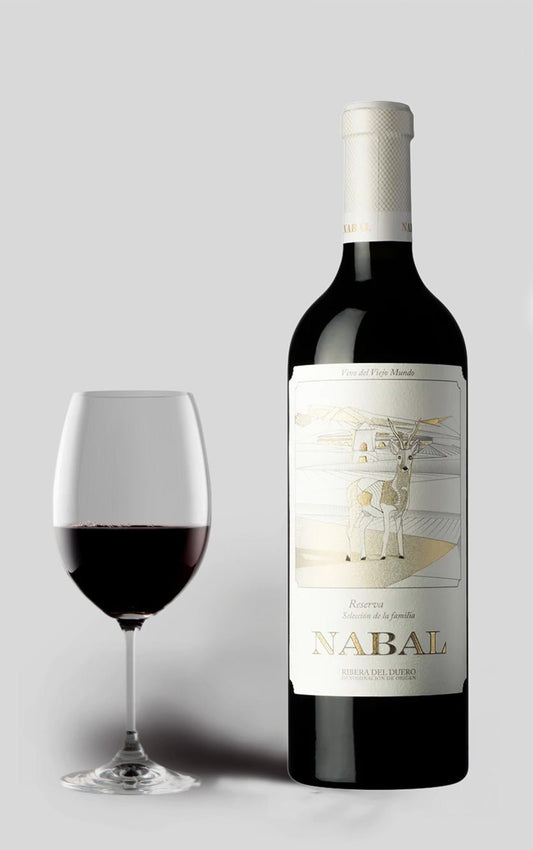 ★ 94 – Robert Parker★ 93 – James Suckling★ 92 – DH Wines★ 4.3 – Vivino
★ 94 – Robert Parker★ 93 – James Suckling★ 92 – DH Wines★ 4.3 – VivinoRibera Del Duero Reserva Seleccion Familia 2016
Vendor:Nabal Bodegas & Viñedos-14% rabatRegular price 299,00 DKKRegular priceUnit price / per349,00 DKKSale price 299,00 DKKSale -
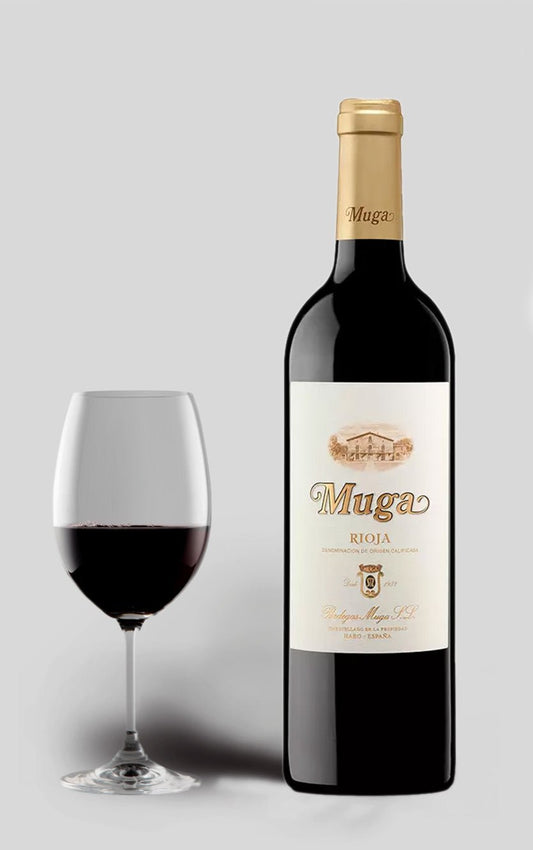 ★ 94 – James Suckling★ 92 – DH Wines★ 4.0 – Vivino
★ 94 – James Suckling★ 92 – DH Wines★ 4.0 – VivinoMuga Reserva 2020 Rioja
Vendor:Muga-17% rabatRegular price 229,00 DKKRegular priceUnit price / per279,00 DKKSale price 229,00 DKKSale -
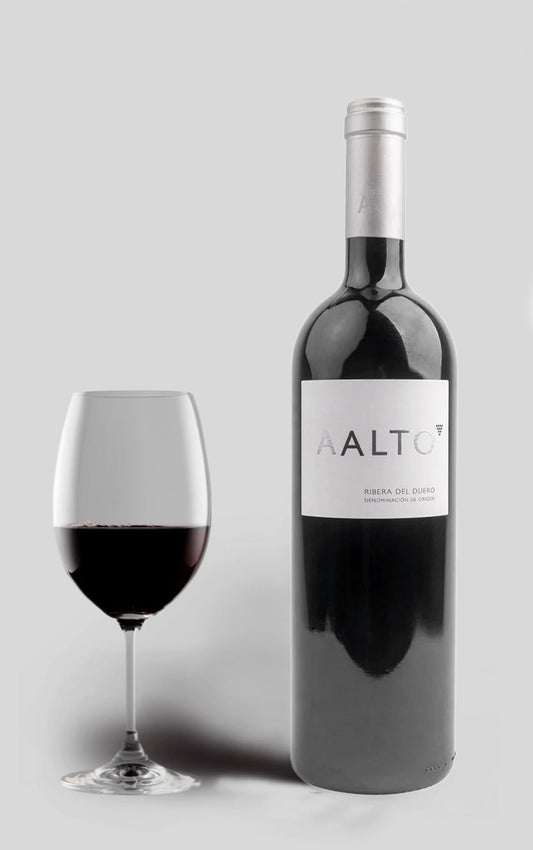 ★ 93 – DH Wines★ 4.1 – VivinoSold out
★ 93 – DH Wines★ 4.1 – VivinoSold outAalto Ribera del Duero 2021
Vendor:AaltoRegular price 399,00 DKKRegular priceUnit price / per -
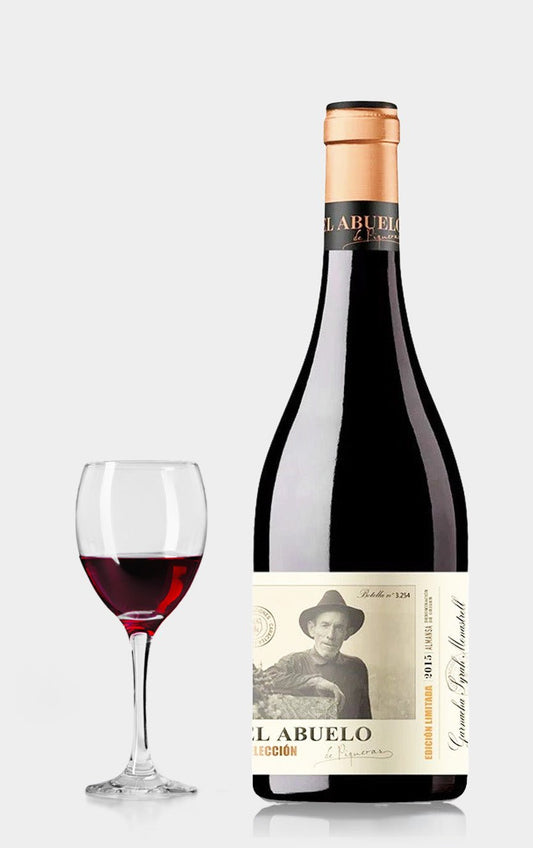 ★ 93 – DH Wines
★ 93 – DH WinesEl Abuelo Seleccion Edicion Limitada 2020
Vendor:Bodegas Piqueras-6% rabatRegular price 149,00 DKKRegular priceUnit price / per159,00 DKKSale price 149,00 DKKSale -
 ★ 93 – DH WinesSold out
★ 93 – DH WinesSold outLa Bella Garnacha 2019
Vendor:Campo de BorjaRegular price 99,00 DKKRegular priceUnit price / per149,00 DKKSale price 99,00 DKKSold out -
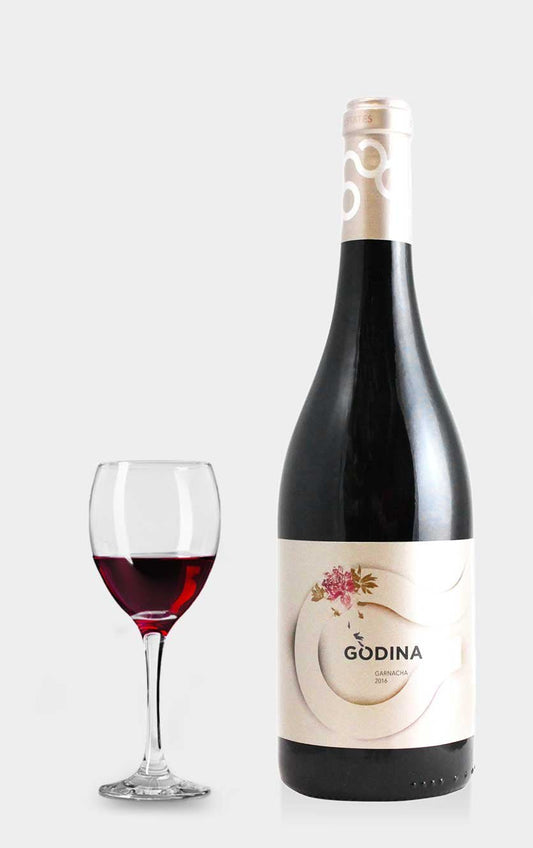 ★ 94 – James Suckling★ 93 – DH Wines★ 91 – Robert Parker★ 4.1 – VivinoSold out
★ 94 – James Suckling★ 93 – DH Wines★ 91 – Robert Parker★ 4.1 – VivinoSold outBodegas Morca `Godina` 2022
Vendor:Bodegas MorcaRegular price 229,00 DKKRegular priceUnit price / per -
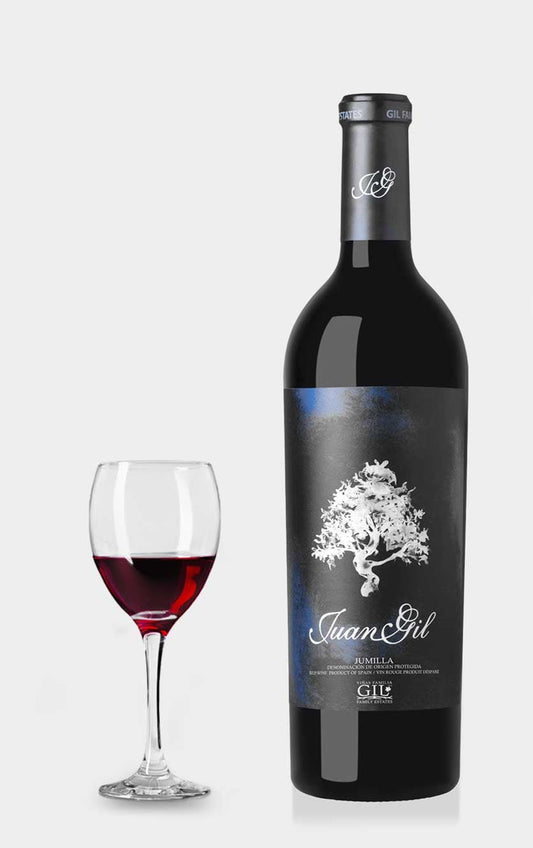 ★ 94 – James Suckling★ 93 – Robert Parker★ 93 – DH Wines★ 91 – Wine Enthusiast★ 4.2 – Vivino
★ 94 – James Suckling★ 93 – Robert Parker★ 93 – DH Wines★ 91 – Wine Enthusiast★ 4.2 – VivinoJuan Gil Blue Label 2020
Vendor:Bodegas Juan Gil-8% rabatRegular price 229,00 DKKRegular priceUnit price / per249,00 DKKSale price 229,00 DKKSale -
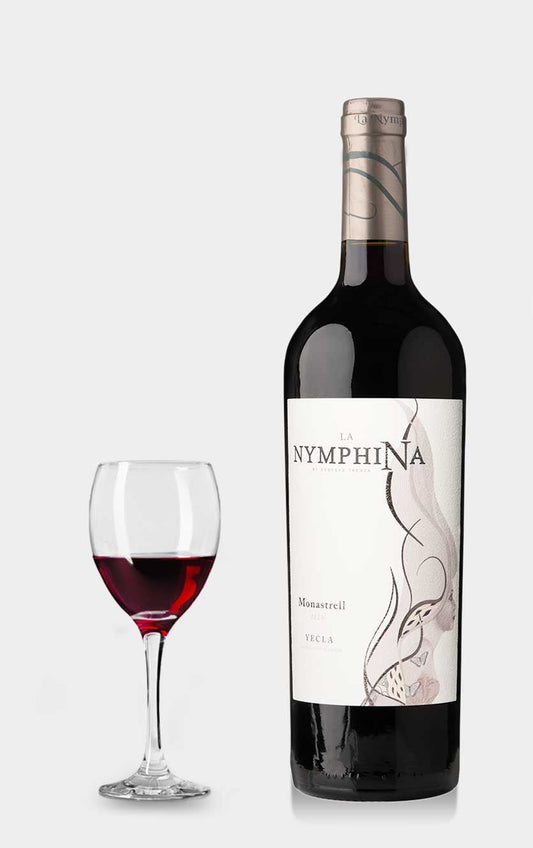 ★ 92 – DH Wines★ 90 – James Suckling★ 4.0 – Vivino
★ 92 – DH Wines★ 90 – James Suckling★ 4.0 – VivinoTrenza La Nymphina Monastrell 2020
Vendor:Bodega TrenzaRegular price 109,00 DKKRegular priceUnit price / per -
 ★ 91 – Robert Parker
★ 91 – Robert ParkerMuga El Andén de la Estación Crianza 2022
Vendor:Muga-24% rabatRegular price 150,00 DKKRegular priceUnit price / per199,00 DKKSale price 150,00 DKKSale -
 ★ 93 – DH Wines
★ 93 – DH WinesSenoro De Odon Crianza 2020
Vendor:Leza Garcia-31% rabatRegular price 89,00 DKKRegular priceUnit price / per129,00 DKKSale price 89,00 DKKSale -
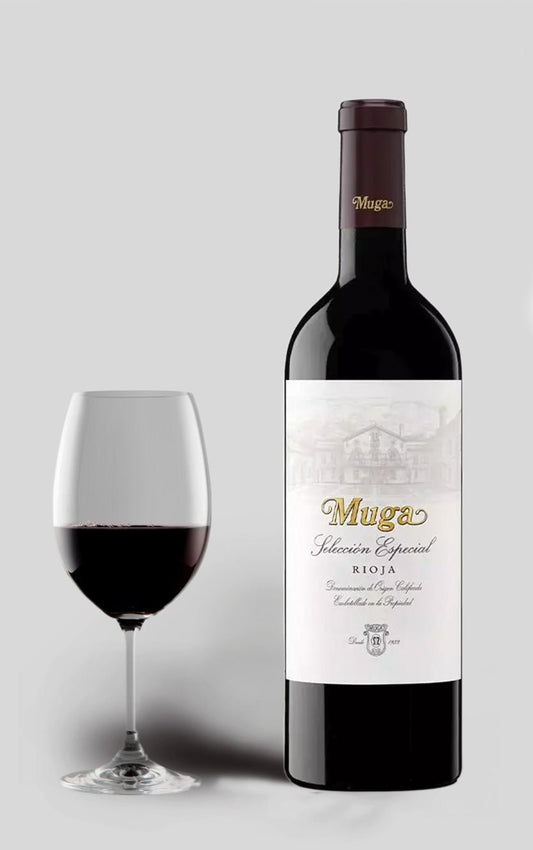 ★ 96 – Robert Parker★ 95 – Wine Enthusiast★ 94 – James Suckling★ 94 – Decanter★ 94 – DH Wines★ 4.5 – Vivino
★ 96 – Robert Parker★ 95 – Wine Enthusiast★ 94 – James Suckling★ 94 – Decanter★ 94 – DH Wines★ 4.5 – VivinoMuga Selection Especial Reserva 2019
Vendor:MugaRegular price 449,00 DKKRegular priceUnit price / per -
 ★ 93 – James Suckling★ 89 – DH Wines★ 3.9 – Vivino
★ 93 – James Suckling★ 89 – DH Wines★ 3.9 – VivinoLopez Cristobal, Ribera del Duero La Linde 2021
Vendor:López CristóbalRegular price 139,00 DKKRegular priceUnit price / per -
 ★ 97 – James Suckling★ 96 – DH Wines★ 94 – Robert Parker★ 94 – Decanter★ 93 – Wine Enthusiast★ 4.5 – Vivino
★ 97 – James Suckling★ 96 – DH Wines★ 94 – Robert Parker★ 94 – Decanter★ 93 – Wine Enthusiast★ 4.5 – VivinoDominio De Pingus Flor De Pingus 2016
Vendor:Dominio De PingusRegular price 1.495,00 DKKRegular priceUnit price / per -
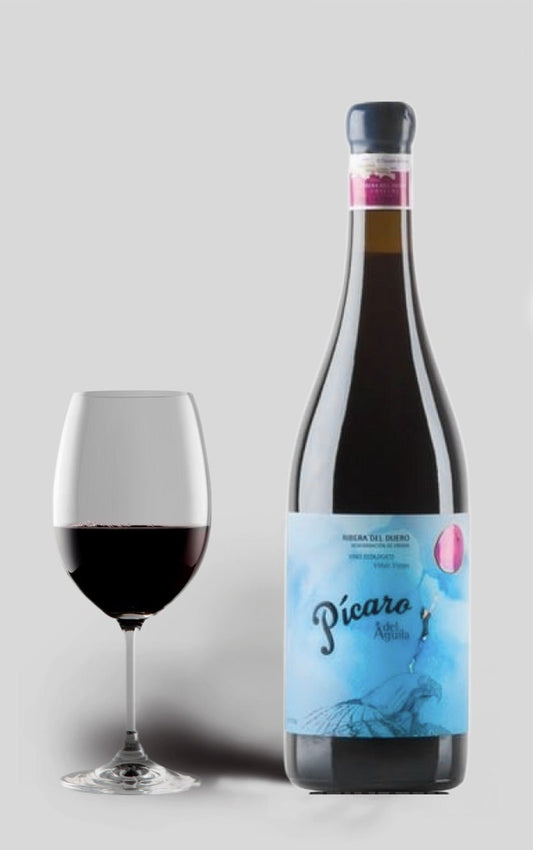 ★ 98 – Robert Parker★ 96 – James Suckling★ 93 – Decanter★ 93 – DH Wines★ 4.4 – Vivino
★ 98 – Robert Parker★ 96 – James Suckling★ 93 – Decanter★ 93 – DH Wines★ 4.4 – VivinoDominio Del Aguila Picaro Vinas Viejas, Ribera Del Duero 2021
Vendor:Picaro Del AguilaRegular price 249,00 DKKRegular priceUnit price / per -
 ★ 94 – James Suckling★ 93 – Wine Enthusiast★ 93 – Robert Parker★ 93 – Decanter★ 91 – DH Wines★ 4.3 – Vivino
★ 94 – James Suckling★ 93 – Wine Enthusiast★ 93 – Robert Parker★ 93 – Decanter★ 91 – DH Wines★ 4.3 – VivinoSei Solo Preludio Ribera Del Duero 2018
Vendor:Sei SoloRegular price 249,00 DKKRegular priceUnit price / per -
 ★ 93 – James Suckling★ 91 – Wine Enthusiast★ 89 – DH Wines★ 4.2 – Vivino
★ 93 – James Suckling★ 91 – Wine Enthusiast★ 89 – DH Wines★ 4.2 – VivinoValdrinal 24 Reserva 2015
Vendor:Valdrinal-18% rabatRegular price 179,00 DKKRegular priceUnit price / per219,00 DKKSale price 179,00 DKKSale -
 ★ 93 – DH Wines★ 4.4 – VivinoSold out
★ 93 – DH Wines★ 4.4 – VivinoSold outBodegas El Nido 'Clio' 2021
Vendor:Bodegas El NidoRegular price 399,00 DKKRegular priceUnit price / per -
 ★ 93 – DH Wines★ 92 – Wine Enthusiast★ 92 – James Suckling★ 91 – Robert Parker★ 4.1 – VivinoSold out
★ 93 – DH Wines★ 92 – Wine Enthusiast★ 92 – James Suckling★ 91 – Robert Parker★ 4.1 – VivinoSold outOntañón Reserva 2015
Vendor:OntañónRegular price 149,00 DKKRegular priceUnit price / per199,00 DKKSale price 149,00 DKKSold out -
 ★ 96 – James Suckling★ 96 – DH Wines★ 95 – Wine Enthusiast★ 94 – Robert Parker★ 94 – Decanter★ 4.6 – Vivino
★ 96 – James Suckling★ 96 – DH Wines★ 95 – Wine Enthusiast★ 94 – Robert Parker★ 94 – Decanter★ 4.6 – VivinoAlion 2020 Bodegas Vega Sicilia Ribera Del Duero
Vendor:Bodegas Vega SiciliaRegular price 749,00 DKKRegular priceUnit price / per -
 ★ 94 – Robert Parker★ 94 – James Suckling★ 92 – DH Wines★ 4.0 – VivinoSold out
★ 94 – Robert Parker★ 94 – James Suckling★ 92 – DH Wines★ 4.0 – VivinoSold outMuga Reserva 2020 Rioja 1/2 bottle
Vendor:MugaRegular price 149,00 DKKRegular priceUnit price / per0,00 DKKSale price 149,00 DKKSold out -
 ★ 93 – DH Wines
★ 93 – DH WinesMarzal Finca Terraluz Edicion Limitada 2023
Vendor:Bodegas TrenzaRegular price 249,00 DKKRegular priceUnit price / per -
 ★ 97 – Wine Enthusiast★ 96 – Robert Parker★ 95 – Decanter★ 95 – DH Wines★ 94 – James Suckling★ 4.5 – Vivino
★ 97 – Wine Enthusiast★ 96 – Robert Parker★ 95 – Decanter★ 95 – DH Wines★ 94 – James Suckling★ 4.5 – VivinoDominio del Aguila Reserva 2019 OWC
Vendor:Dominio De PingusRegular price 599,00 DKKRegular priceUnit price / per -
 ★ 97 – James Suckling★ 95 – Robert Parker★ 94 – DH Wines★ 93 – Wine Enthusiast★ 93 – Decanter★ 4.5 – Vivino
★ 97 – James Suckling★ 95 – Robert Parker★ 94 – DH Wines★ 93 – Wine Enthusiast★ 93 – Decanter★ 4.5 – VivinoMarques de Murrieta Castillo Ygay - Gran Reserva Especial 2009
Vendor:Marques de MurrietaRegular price 2.495,00 DKKRegular priceUnit price / per -
 ★ 94 – James Suckling★ 93 – Robert Parker★ 93 – DH Wines★ 92 – Decanter
★ 94 – James Suckling★ 93 – Robert Parker★ 93 – DH Wines★ 92 – DecanterPSI 2021 Ribera Del Duero, Peter Sisseck
Vendor:Dominio De PingusRegular price 350,00 DKKRegular priceUnit price / per -
 ★ 95 – James Suckling★ 93 – Wine Enthusiast★ 93 – Robert Parker★ 93 – Decanter★ 92 – DH Wines★ 4.3 – Vivino
★ 95 – James Suckling★ 93 – Wine Enthusiast★ 93 – Robert Parker★ 93 – Decanter★ 92 – DH Wines★ 4.3 – VivinoSei Solo Preludio Ribera Del Duero 2021
Vendor:Sei SoloRegular price 299,00 DKKRegular priceUnit price / per -
 ★ 92 – DH Wines★ 90 – James SucklingSold out
★ 92 – DH Wines★ 90 – James SucklingSold outBraid Made 2020
Vendor:Bodega TrenzaRegular price 169,00 DKKRegular priceUnit price / per0,00 DKKSale price 169,00 DKKSold out -
 ★ 94 – James Suckling★ 93 – Robert Parker★ 93 – DH Wines★ 91 – Wine Enthusiast★ 4.3 – VivinoSold out
★ 94 – James Suckling★ 93 – Robert Parker★ 93 – DH Wines★ 91 – Wine Enthusiast★ 4.3 – VivinoSold outJuan Gil Blue Label 2019
Vendor:Bodegas Juan GilRegular price 249,00 DKKRegular priceUnit price / per -
 ★ 95 – Robert Parker★ 95 – James Suckling★ 94 – DH Wines★ 93 – Decanter★ 92 – Wine Enthusiast★ 4.4 – Vivino
★ 95 – Robert Parker★ 95 – James Suckling★ 94 – DH Wines★ 93 – Decanter★ 92 – Wine Enthusiast★ 4.4 – VivinoVi De Vila Porrera Tinto Priorat, Cims De Porrera 2020
Vendor:Vi De Vila Porrera-11% rabatRegular price 239,00 DKKRegular priceUnit price / per269,00 DKKSale price 239,00 DKKSale -
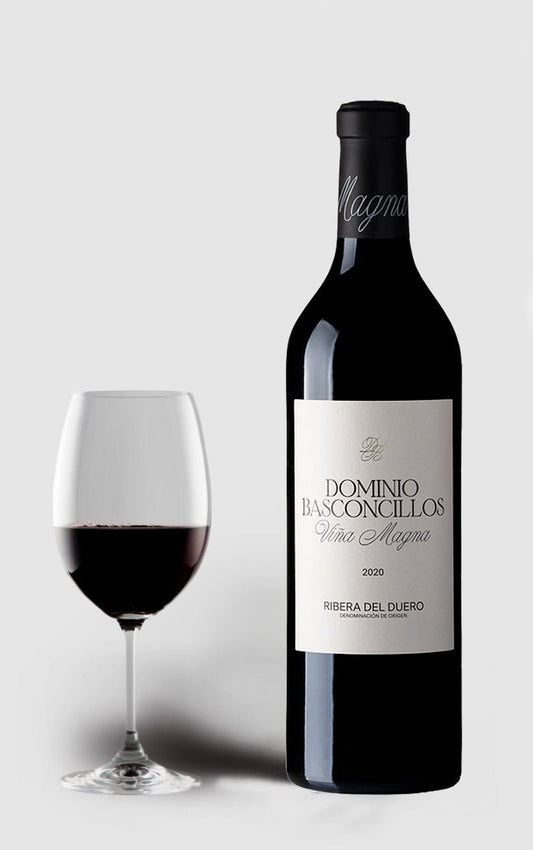 ★ 95 – James Suckling★ 93 – DH Wines★ 4.1 – Vivino
★ 95 – James Suckling★ 93 – DH Wines★ 4.1 – VivinoDominio Basconcillo's Vina Magna Crianza 2020
Vendor:Dominio BasconcillosRegular price 269,00 DKKRegular priceUnit price / per0,00 DKKSale price 269,00 DKK -
 ★ 95 – Wine Enthusiast★ 95 – Robert Parker★ 95 – James Suckling★ 95 – Decanter★ 94 – DH Wines★ 4.6 – Vivino
★ 95 – Wine Enthusiast★ 95 – Robert Parker★ 95 – James Suckling★ 95 – Decanter★ 94 – DH Wines★ 4.6 – VivinoAlion 2019 Bodegas Vega Sicilia, Ribera Del Duero
Vendor:Bodegas Vega SiciliaRegular price 799,00 DKKRegular priceUnit price / per -
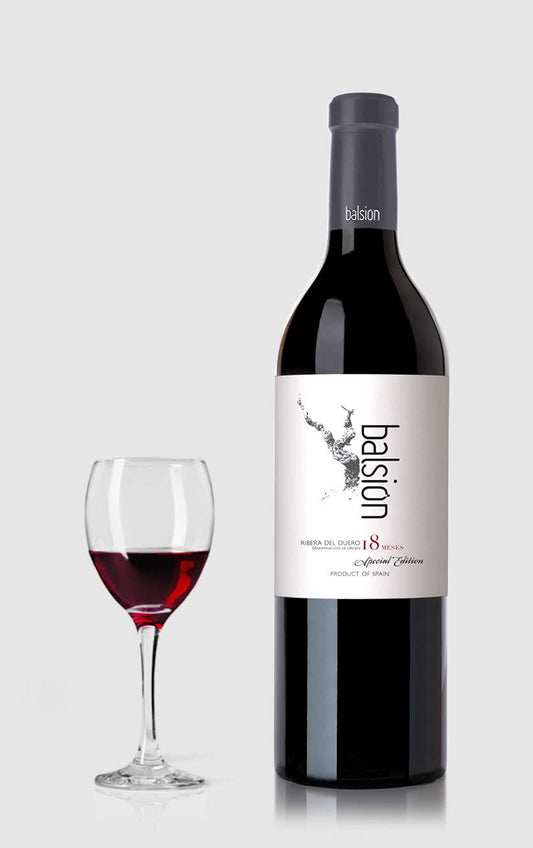 ★ 92 – DH Wines
★ 92 – DH WinesBalsion 18 Months 2021, Ribera del Duero
Vendor:Bodegas ResalteRegular price 199,00 DKKRegular priceUnit price / per -
 ★ 94 – DH Wines★ 92 – Robert Parker★ 4.4 – Vivino
★ 94 – DH Wines★ 92 – Robert Parker★ 4.4 – VivinoWatchtower `Alaya Tierra` 2021
Vendor:Bodegas AtalayaRegular price 249,00 DKKRegular priceUnit price / per -
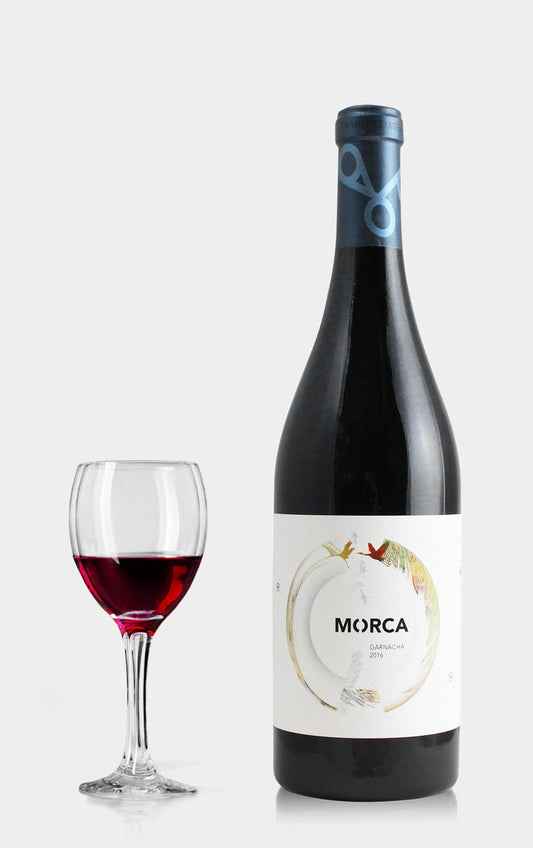 ★ 5 stars – VinAvisen★ 4.5 – Vivino
★ 5 stars – VinAvisen★ 4.5 – VivinoBodegas Morca `Morca` 2019
Vendor:Bodegas MorcaRegular price 349,00 DKKRegular priceUnit price / per0,00 DKKSale price 349,00 DKK -
 ★ 96 – James Suckling
★ 96 – James SucklingMarqués de Murrieta Reserva 2019
Vendor:Marques de Murrieta-6% rabatRegular price 279,00 DKKRegular priceUnit price / per299,00 DKKSale price 279,00 DKKSale -
 ★ 93 – DH Wines★ 4.1 – Vivino
★ 93 – DH Wines★ 4.1 – VivinoVega Clara 2020 Jilguerin, Ribera del Duero
Vendor:Vega ClaraRegular price 139,00 DKKRegular priceUnit price / per0,00 DKKSale price 139,00 DKK -
 ★ 93 – James Suckling★ 93 – Decanter★ 92 – Robert Parker★ 92 – DH Wines★ 91 – Wine Enthusiast★ 4.1 – Vivino
★ 93 – James Suckling★ 93 – Decanter★ 92 – Robert Parker★ 92 – DH Wines★ 91 – Wine Enthusiast★ 4.1 – VivinoMarques de Vargas Gran Reserva 2012
Vendor:Marques de VargasRegular price 349,00 DKKRegular priceUnit price / per0,00 DKKSale price 349,00 DKK -
 ★ 97 – DH Wines★ 96 – James Suckling★ 95 – Wine Enthusiast★ 94 – Robert Parker★ 93 – Decanter★ 4.5 – Vivino
★ 97 – DH Wines★ 96 – James Suckling★ 95 – Wine Enthusiast★ 94 – Robert Parker★ 93 – Decanter★ 4.5 – VivinoDominio De Pingus Flor De Pingus 2018
Vendor:Dominio De PingusRegular price 1.295,00 DKKRegular priceUnit price / per -
 ★ 96 – DH Wines★ 4.4 – Vivino
★ 96 – DH Wines★ 4.4 – VivinoDominio De Pingus Flor De Pingus 2015
Vendor:Dominio De PingusRegular price 1.495,00 DKKRegular priceUnit price / per -
 ★ 96 – DH Wines★ 95 – Wine Enthusiast★ 95 – Robert Parker★ 94 – Decanter★ 92 – James Suckling★ 4.6 – Vivino
★ 96 – DH Wines★ 95 – Wine Enthusiast★ 95 – Robert Parker★ 94 – Decanter★ 92 – James Suckling★ 4.6 – VivinoDominio De Pingus Flor De Pingus 2009
Vendor:Dominio De PingusRegular price 1.500,00 DKKRegular priceUnit price / per -
 ★ 96 – Robert Parker★ 95 – James Suckling★ 94 – Decanter★ 93 – Wine Enthusiast★ 92 – DH Wines★ 4.4 – Vivino
★ 96 – Robert Parker★ 95 – James Suckling★ 94 – Decanter★ 93 – Wine Enthusiast★ 92 – DH Wines★ 4.4 – VivinoCastilla Y León Qs Quinta Sardonia 2018
Vendor:Cascina BallarinRegular price 349,00 DKKRegular priceUnit price / per429,00 DKKSale price 349,00 DKKSold out -
 ★ 93 – Decanter★ 92 – Robert Parker★ 92 – James Suckling★ 91 – DH Wines★ 4.2 – Vivino
★ 93 – Decanter★ 92 – Robert Parker★ 92 – James Suckling★ 91 – DH Wines★ 4.2 – VivinoBodegas Borsao Berola 2018
Vendor:Bodegas BarbadilloRegular price 149,00 DKKRegular priceUnit price / per -
 ★ 96 – DH Wines★ 95 – Wine Enthusiast★ 94 – James Suckling★ 93 – Decanter★ 92 – Robert Parker★ 4.6 – Vivino
★ 96 – DH Wines★ 95 – Wine Enthusiast★ 94 – James Suckling★ 93 – Decanter★ 92 – Robert Parker★ 4.6 – VivinoDominio De Pingus Flor De Pingus 2013
Vendor:Dominio De PingusRegular price 1.295,00 DKKRegular priceUnit price / per -
 ★ 94 – DH Wines★ 4.5 – VivinoSold out
★ 94 – DH Wines★ 4.5 – VivinoSold outBodegas Morca 'Touran' 2015
Vendor:Bodegas MorcaRegular price 899,00 DKKRegular priceUnit price / per0,00 DKKSale price 899,00 DKKSold out -
 ★ 98 – James Suckling★ 97 – Robert Parker★ 96 – DH Wines★ 4.6 – Vivino
★ 98 – James Suckling★ 97 – Robert Parker★ 96 – DH Wines★ 4.6 – VivinoMarqués de Murrieta Castillo Ygay Gran Reserva Especial 2012
Vendor:Marques de MurrietaRegular price 2.495,00 DKKRegular priceUnit price / per
Collection: Spanish Red Wine
Spanish red wine is known for its deep colors, complex aromas and balance between fruit, palate and spice. The country's vast geographical differences and long winemaking tradition have created a diverse range of red wines, ranging from classic Rioja to modern, concentrated wines from Priorat and Toro.
The main Spanish wine regions for red wine
- Rioja : Spain's most iconic wine region. Known for Tempranillo-dominated wines with elegant fruit and distinct barrel character. Classifications: Crianza, Reserva and Gran Reserva.
- Ribera del Duero : Dense and dark Tempranillo (Tinto Fino) with high concentration, structure and aging potential. High altitude fields and continental climate.
- Priorat : Mineral-rich, powerful red wine made from Garnacha and Cariñena. Low yield and high intensity.
- Toro : Tempranillo in a muscular and intense style (locally called Tinta de Toro). High alcohol and great aging potential.
- Montsant and Bierzo : Garnacha-based fruit and springy Mencía in a fresher style, respectively.
Grape varieties and styles
Spanish red wine is not limited to one style, but varies in intensity, fruitiness and aging. The most commonly used grapes are:
- Tempranillo : The backbone of many Spanish red wines. Balanced structure, dark berries, leather and vanilla when aged in barrels.
- Garnacha (Grenache) : Juicy, spicy and high in alcohol. Often used alone or in blends – especially in warm regions.
- Monastrell (Mourvèdre) : Dense and spicy. Typically from the southeast (Jumilla, Yecla).
- Graciano, Mencía and Bobal : Lesser known grapes with regional importance and increasing quality.
Spanish wine is often aged, and the classifications (Crianza, Reserva, Gran Reserva) help indicate style and development.
Storage classes and wine legislation
Spanish wine is known for following a system that specifies minimum aging in barrel and bottle:
- Crianza : Min. 1 year in barrel and 1 year in bottle (red wine).
- Reserva : Minimum 1 year in barrel and 2 years in bottle.
- Gran Reserva : Minimum 2 years in barrel and 3 years in bottle.
This creates wines with tertiary aromas of leather, tobacco, vanilla and dried fruit. However, modern producers are also choosing to make fruity, younger red wines with little or no barrel aging.
Frequently asked questions about Spanish red wine
What is the difference between Crianza, Reserva and Gran Reserva?
The difference lies in the aging time. Crianza is aged for at least 1 year in barrel, Reserva for 1 year in barrel and 2 years in bottle, while Gran Reserva requires at least 2 years in barrel and 3 years in bottle. The higher the classification, the more developed the style.
What food goes well with Spanish red wine?
Tempranillo and Garnacha go well with grilled meats, tapas, lamb, pork and hard cheeses. Fuller wines like those from Toro or Priorat work well with stews and game.
Can Spanish red wine be aged?
Yes. Reserva and Gran Reserva wines in particular, as well as wines from Ribera del Duero and Priorat, can be aged for 10–20 years. They develop tertiary notes and softer structure over time.
- Choosing a selection results in a full page refresh.
- Opens in a new window.
